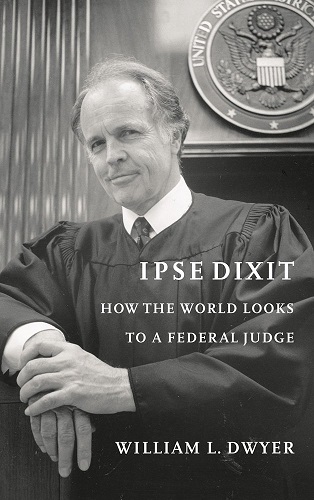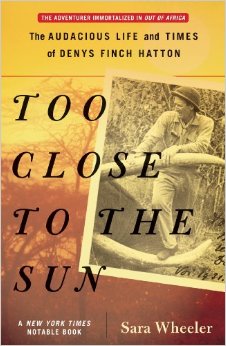In ‘Dry Storeroom No. 1: The Secret Life of the Natural History Museum,’ author/paleontologist Richard Fortey takes readers into the inner sanctum of one of the world’s most remarkable collections of natural-history specimens, tended to by a dedicated corps of eccentric scientists who investigate its mysteries.
‘Dry Storeroom No. 1: The Secret Life of the Natural History Museum’
by Richard Fortey
Knopf, 352 pp., $27.50
Millions of visitors pour through the doors of London’s Natural History Museum every year, and for good reason. The museum houses one of the most complete and remarkable collections of natural history in the world, collected (or donated) by generations of intrepid, pith-helmeted British explorers throughout the world.
But few will have the opportunity to go behind the exhibit halls, to the cramped and dusty offices, filled with quirky scientists passionately devoting their lives to the study of our natural history. In “Dry Storeroom No. 1” Richard Fortey, an expert in trilobites (small extinct anthropoids with an extensive fossil record) who devoted his career to the museum, takes us on a fascinating tour through this unseen world of scientists with a focus on the most arcane details of the natural world.
At the London museum, only a tiny fraction of the actual collections are on display. While casual visitors may be forgiven for mistaking the visible display cases for the entire museum, in fact the “real” museum is locked away behind the door, where millions of specimens are methodically described, named, cataloged and preserved.
There are five working departments: paleontology, mineralogy, zoology, botany and entomology. In each, teams of devoted scientists collect, analyze, describe and preserve specimen examples, cataloging the stunning diversity of life on Earth, the vast bulk of which has not even been identified, much less named.
Fortey points out, for example, that no less than one fifth of all species on Earth are beetles, yet only a half million species of beetles have been identified and named so far, leaving a staggering volume of life yet uncataloged, described or even named. (As J.B.S. Haldane famously remarked, whatever else one might say about God, he or she surely appears to have “an inordinate fondness for beetles.”) The museum’s insect collection alone has grown from 2.2 million specimens in 1912 to 80 million today.
But as obscure as the thankless task of cataloging the variations of vole teeth, beetles or fungus gnats might seem, the fruits of that research are far from purely academic. Fortey notes that when Florida’s lucrative orange crop was threatened by an infestation of white flies from Trinidad, entomologists were able to identify a parasitic wasp with a special appetite for this specific white fly. The wasp was bred in vast numbers by the University of Florida, and the knowledge of this obscure branch of the insect world protected a critical resource from destruction.
Similarly, a parasitic encyrtid wasp from Paraguay was used to destroy a mealy bug that threatened the cassava crop, a critical carbohydrate staple crop in much of the Third World. As Fortey dryly notes, “there is an inherent value in having people who ‘know their stuff.’ ” Knowledge of the Paraguay wasp undoubtedly saved thousands from starvation.
The museum is, without doubt, a cathedral to Charles Darwin and his enormous contributions to the understanding of evolution and the natural world. Fortey dismisses as absurd the suggestion that evolution is a mere “theory” subject to a creationist critique: “So overwhelming is the evidence for evolution by descent that one could say that it is as secure as the fact that the Earth goes around the sun and not the other way.” But rather than waste the time or energy to debate the point, Fortey instead focuses his attention on the fossil record, which speaks for itself.
Fortey brings to life not only the science but the quirky scientists, their midnight trysts (who knew?) and personal quirks. Peter Whitehead, the museum’s specialist in clupeoid fish (including herring and anchovies), not only published the encyclopedic 600-page “Clupeoid Fishes of the World” but was infamous for his affairs with younger female staff members. He commuted to the museum every day from Oxford and “always claimed to be able to fix up a date with any attractive waitress by the time he reached Paddington Station.”
Curiously, Whitehead discovered a lost Mozart manuscript while searching for a 16th-century work on Brazilian herring. As Fortey notes, “it is surprising where the pursuit of herrings can lead.” Whitehead left the museum in the early 1990s and vanished in Mexico; when his wife tried to search his office for incriminating evidence of his affairs, she found herself locked out by the museum staff.
Fortey compares the scientists to the object of their study – noting his own increasing resemblance of a tribolite as he gained weight, or how fellow scientist Gordon Corbett (a small-mammal expert) had a hesitant manner and nervous way of speaking, resembling small voles, who pause momentarily, whiskers twitching. The author balances academic rigor with entertaining detail – with an ample measure of dry British wit – along with a capable working history of the stewardship of the British museum system.
The London Natural History Museum, like every other modern institution, has undergone significant changes in the modern era. No longer a bastion of civil servants with an untouchable budget, a more modern administration has changed the culture of the museum to be more consumer friendly; but its rich legacy remains an endowment and critical resource in understanding the world around us.









